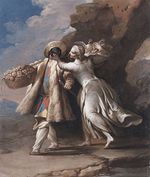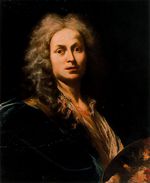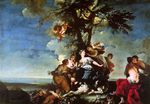Featured Artist at the e.Gallery: Maurice de Vlaminck

|
Featured Artist at the e.Gallery this week is a 20th Century artist of the Fauvist movement, Maurice de Vlaminck [French, 1876-1958] Link: https://fineart.elib.com/fineart.php?dir=Alphabetical/Vlaminck_Maurice_de Maurice de Vlaminck (Paris 1876 – Rueil-la-Gadelière 1958) was three years old when his family moved from Paris to Vésinet. He first pursued the same musical career as his parents, who were both musicians, leaving his home as a trained double-bass player in 1892 to move to Chatou near Versailles. After absolving his military service in Vitré Maurice Vlaminck worked as a musician until he accidentally met André Derain in 1900. It was Derain who kindled Vlaminck’s artistic ambitions. He decided to become a painter and rented an old hut in which he and Derain shared a studio. A crucial turning point in Vlaminck’s artistic development was a visit to a van Gogh exhibition in Paris in the following year. In 1902 the young painter met Henri Matisse, who encouraged him to exhibit at the “Salon des Indépendents”. In 1905 Maurice Vlaminck had a group exhibition with Matisse, Derain, Friesz, Manguin and others at the “Salon d’automne”. The radically new colour scheme with large areas of pure colour inspired the critic Vauxelles to refer to the artists as the “Fauves”. The lively acceptance of this new painting style is reflected in the following acquisition of Vlaminck’s entire work by the art dealer Ambroise Vollard. He also arranged the artist’s first one-man exhibition in 1906. A brief interest in Cubism is merely reflected in a short intermezzo of a few Cubist compositions. Maurice Vlaminck’s artistic work was interrupted for four years in 1914 when he was drafted into the war. After his release Vlaminck established a small studio in Paris where he prepared for his next exhibition. It took place in 1919 at Druet, bringing about the artist’s definite break-through. The show was so successful that he was able to buy a house in Valmondois in the same year. Here, in this rural environment, Vlaminck was finally able to develop his own style as a landscape painter. His interest in rural landscapes never ceased, even after his move to the Département Eure-et-Loire in 1925. His work was honoured in numerous international exhibitions during the 1930s. The last years of Maurice Vlaminck’s life were determined by his friendship with the Swiss doctor Sigmund Pollag, who collected the artist’s graphic oeuvre and donated it to the Kunstmuseum Bern in 1970. Vlaminck wrote more than 20 books, including autobiographic texts. |
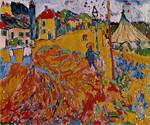 The Circus |
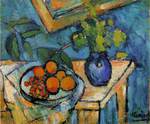 Still Life |
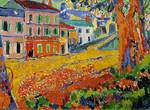 Restaurant at Marly-le-Roi |
 Portrait of a Woman |





